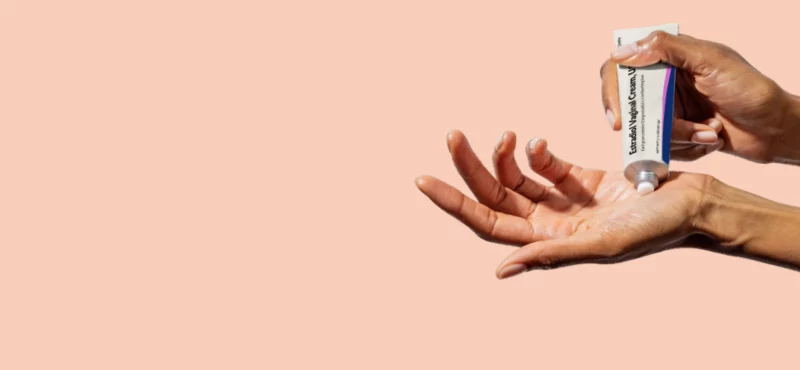Are you considering vaginal rejuvenation laser treatment and trying to understand the cost, benefits, and safety risks? In this article, we’ll compare laser vaginal rejuvenation to vaginal estrogen cream, so you can make an informed decision about your treatment options. By the end of this article, you'll be saying "why didn't anyone tell me about this earlier?"
What is Laser Vaginal Rejuvenation?
Laser vaginal rejuvenation is an elective genital cosmetic procedure that's becoming increasingly common. Both patient interest and the number of genital cosmetic procedures performed have increased in the last decade.
You may have seen laser vaginal rejuvenation promoted in medical spas or doctor's offices as a way to treat common menopause-related concerns like vaginal dryness, painful sex, and urgency to pee.
Laser vaginal rejuvenation is a laser treatment that's administered in and around the vagina. But buyer beware - manufacturers have been involved with deceptive marketing, and there is little clinical evidence to support that laser vaginal rejuvenation is effective.
How Does Laser Vaginal Rejuvenation Work?
Vaginal rejuvenation laser treatment is marketed as a way to help restore everything from vaginal tissue to sexual confidence. The treatment is administered by a medical professional who directs a laser that makes tiny cuts to the inside and outside of your vagina - with the intention of stimulating collagen production and restoring moisture and elasticity.
However, both OBGYNs and the FDA have warned that there is no evidence that laser vaginal rejuvenation works to treat vaginal changes due to menopause. The FDA further warns that laser vaginal rejuvenation can cause burns, scarring, and chronic pain and is "deeply concerned women are being harmed".
A 2021 study published in the reputable Journal of the American Medical Association showed that there was no change in symptom severity when comparing women who had received laser vaginal treatment to women who had not.
A 2020 committee of OBGYNs concluded that patients should be made aware vaginal rejuvenation procedures are "not medically indicated, pose substantial risk, and their safety and effectiveness have not been established."
Who Needs Laser Vaginal Rejuvenation?
Vaginal laser rejuvenation is marketed toward women who are experiencing vaginal changes from declining estrogen levels during menopause.
However, the FDA has warned of numerous cases of deceptive marketing of vaginal laser rejuvenation - including marketing to women who have completed estrogen-inhibiting treatment for breast cancer and women who are experiencing early menopause.
Indeed, if you have completed treatment for breast cancer or are experiencing early menopause, you may find that you're suddenly experiencing vaginal dryness, lack of vaginal moisture, urgency to pee, and pain with sex.
Women considering any vaginal treatment should speak to a doctor about treatment options. There are other options (including vaginal estrogen which we'll cover later) that are well-studied and recommended for women who have vaginal symptoms from menopause.
What is Vaginal Estrogen?
If you don't want to risk burning your vagina (or pocketbook!) with laser vaginal rejuvenation, then vaginal estrogen cream is a safer, more affordable, and more effective option.
Vaginal estrogen is an at-home vaginal dryness treatment that's approved by the FDA. Vaginal estrogen comes in an array of forms including creams, rings, tablets, and suppositories, and can be prescribed online or in person by a doctor. A review of 19 clinical studies showed that all forms are similarly effective.
- Cream - Vaginal estrogen cream is usually applied to the vagina once daily for two weeks and then every 3-4 days to maintain results. The cream is applied with either an applicator or your finger tip.
- Suppository - Vaginal estrogen suppositories are usually inserted into the vagina once daily for two weeks and then every 3-4 days. Suppositories are inserted using a disposable applicator which can be uncomfortable - especially if atrophy is present.
- Ring - The vaginal estrogen ring is a plastic ring that is worn inside your vagina for three months. The ring does not need to be removed during sexual activity or bathing. Most women and their partners do not notice it at all - but the ring will sometimes fall out.
How Does Vaginal Estrogen Work?
Decades of research have shown that topical vaginal estrogen can improve symptoms such as dryness, itching, burning, and pain during sex in women who are experiencing menopause-related vaginal discomfort. Additionally, it can help improve vaginal plumpness and elasticity, reduce urinary incontinence, prevent infection, restore natural moisture and lubrication, and help make intimacy more enjoyable again.
Vaginal estrogen works with your body to restore moisture, lubrication, pH, and plumpness to the vaginal tissues. The vaginal opening contains a concentration of estrogen receptors, so when vaginal estrogen is applied to the vaginal opening, these cells can help to restore lost estrogen to the entire vulva. As a result, vaginal changes can be reversed - helping you to prevent infection, enjoy intimacy, and restore everyday comfort.
Who Can Take Vaginal Estrogen?
Pretty much any woman with moderate to severe vaginal atrophy can take vaginal estrogen. According to a 2022 statement from the North American Menopause Society, vaginal estrogen can be taken at any age and for an extended duration. Vaginal atrophy symptoms include:
- Vaginal dryness
- Frequent UTIs
- Painful sex
- Urgency to pee
- Vaginal burning and irritation
Unlike oral forms of estrogen, vaginal estrogen has not been shown to be absorbed in the bloodstream and has not been shown to carry an elevated risk of breast cancer. The American College of Obstetricians and Gynecologists states that women with a history of breast cancer can use vaginal estrogen with approval from an oncologist.
Cost of Vaginal Rejuvenation Laser vs. Vaginal Estrogen
Compared to vaginal rejuvenation lasers, using vaginal estrogen is more affordable. Here at Interlude, the cost of a 60-day supply of vaginal estrogen cream can be as low as $39, whereas the cost of one vaginal laser treatment can range from $800-$2,000. The cost savings alone can be enough reason to opt for vaginal estrogen.
How to Get Help for Vaginal Changes from Menopause
If you're embarrassed or ashamed by the appearance of your vagina or vulva - be reminded that the size, shape, and color can vary greatly from woman to woman. These differences are further magnified as we go through menopause.
About 90% of women in their 50s have clinically observable signs of vaginal atrophy, but not all women will notice or be bothered by these changes. Some women will notice vaginal changes that are related to vaginal atrophy. And while these changes are totally natural, they don't have to be your new normal.
If you're in menopause and bothered by moderate to severe vaginal dryness, painful sex, or everyday discomfort and pain, talk to a medical provider about your symptoms. Without treatment, symptoms can continue to progress, so it’s better to get help sooner rather than later.



